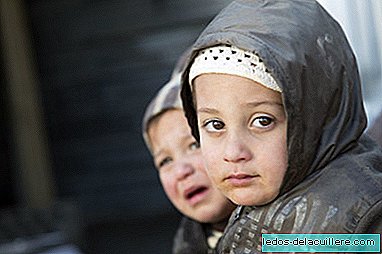
Three years of war in Syria are passing a very high bill to the population, and especially to children. If there are deficiencies in the care of basic needs, it is also very striking how the destruction caused on the Health System causes negative consequences on the health of children.
At this time, more than 60% of hospitals do not work and almost half of the doctors have fled. Sometimes healthcare workers "must" employ brutal practices such as amputating limbs to injured children, by not having the necessary equipment to treat them.
Not to mention the epidemics that leave children exposed to diseases (some fatal)Since the war broke out three years ago, it is likely that several thousand children have already died due to highly restricted access to treatments for chronic and fatal diseases such as cancer, epilepsy, asthma, diabetes, hypertension or kidney failure.
The few facilities that remain, struggle to cope with the high number of patients who need treatment. Health workers, medical staff and patients, boys and girls included, have suffered attacks while on the road or within the medical facilities themselves. The houses are used as improvised hospitals, transforming the halls into operating scenarios.
 Doctor operating a baby with the light of his phone
Doctor operating a baby with the light of his phoneNot only knowing that the war continues in Syria ...
... and not only celebrate the fate of our children for not being born there. That it does not happen to us does not mean that it is not happening: our children enjoy a happy childhood, Syrian children feel terror every day.
The message released by Save the Children 's latest report on the situation in this country in the Middle East is: “The humanitarian crisis has become a health crisis”. To the inhuman conditions of children, we must add the fact that if they get sick or get injured, "finding a doctor is a matter of luck."

Among the most worrying trends is the reappearance of diseases that disfigure and are fatal, such as polio and measles, which can permanently disfigure and paralyze, and even kill. It is likely that up to 80,000 children have been infected with the most aggressive polio and are spreading the disease.
Most of the diseases that affect children in Syria today are treatable and most preventable in a functioning health system. Such diseases, including measles, diarrhea and respiratory diseases, are among those that cause the highest mortality among children under 5 years of age worldwide. An indicator that the Syrian health system has collapsed is that during 2010 26 cases of measles were detected throughout the country. During the first week of 2014, 84 cases were recorded in northern Syria only among children under five.
A unanimous resolution of the United Nations Security Council is needed for humanitarian access to be implemented, and so that children and their families have access to food, water, vaccines and medicines in order to save lives, regardless of where they are.
I leave you to finalize the information on the #NOlostgeneration Campaign, which UNICEF, UNHCR, Save the Children, World Vision and Peace Corps, are developing.
Source (and images) | Save the Children Report | A price too high More information about #NOlostgeneration | AEPED In Peques and More | Syria has become an example of the lack of protection of children during an armed conflict. Are we willing to help children who live thousands of kilometers away? Children's Villages Campaign in Norway












